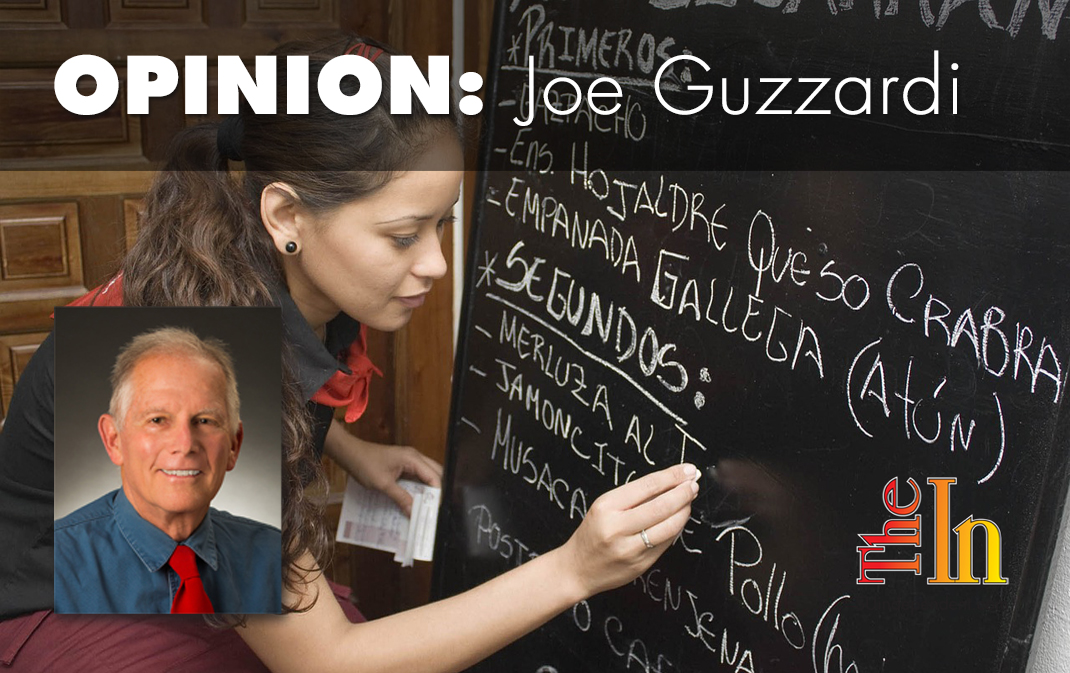
$15 minimum wage imploding
Raising and sustaining higher wages for American workers is impossible as long as the labor pool keeps expanding. Serious discussion about lasting improvements to the lives of the 40 million Americans stuck in low-paying jobs has to include an equally thoughtful discussion about limiting immigration.
While many in Congress and private sector economists embrace raising the $7.25 federal minimum wage (it’s been frozen in place for a decade), few speak out about reducing immigration as a permanent income-boosting cure. The academic exercise is basic: The more available workers, the better for employers. Conversely, tighten the labor pool and the advantage shifts to workers and job seekers.
Recently, the House Education and Labor Committee passed the Raise the Wage Act, which if it became law would gradually raise the federal minimum wage over five years to $15 an hour. So far, six states — California, Illinois, Maryland, Massachusetts, New Jersey, and New York — and the District of Columbia have adopted $15 as their minimum wage. Although not enough data are available to make a final conclusion about the $15 wage’s broad effects, Georgetown University public policy professor and former Clinton administration Labor Department economist Harry Holzer predicts significant job losses that would hurt low-skilled, less educated minority employees who would resort to accepting cash off the books and thereby forfeit any benefits they may have had.
In New York and other major states like California, Professor Holzer is spot on. Over the past four years, for New York City restaurants that employ 10 or more workers, the minimum wage increased from $10.50 an hour to $15, a whopping 43 percent increase. By 2020, all restaurants large and small will shell out $15 an hour. Consequently, in last year’s final quarter 4,000 full-service restaurant workers lost their jobs. And by the end of 2018, New York City had fewer restaurant employees than in November 2016. Deeper restaurant staffing cuts are anticipated, and fast-food workers are lobbying city officials to protect them from being fired without just cause.
And former California Gov. Jerry Brown’s $15 minimum wage law has forced employers to reduce staff or leave the state in search of a friendlier business climate. Michael Saltsman, managing director for the Employment Policies Institute, projects that by 2022 the $15 minimum wage will eliminate 400,000 jobs.
Turning to immigration statistics and analyzing the four-year data from 2015 through 2018, the U.S. admitted more than 4 million lawful permanent residents, roughly 1 million or more annually, and granted them lifetime work authorization. During the same period, about 3 million guest workers arrived, about 750,000 per year. With work permits in hand, immigrants can compete head-to-head with citizens for the shrinking number of restaurant jobs, adding to the existing workers’ burdens. Consider also the hundreds of thousands of illegal immigrants the food services industry employs. Their presence in the labor pool makes $15 an hour personnel layoffs easier since cheap labor can readily replace them.
As long as immigration remains at record levels, a truly tight labor market will always be elusive, even though by definition it translates to higher wages. For unemployed Americans, their job search becomes easier, and those who have quit the workforce out of frustration become eager to re-enter. But Congress refuses to get the message about the link between over-immigration and depressed U.S. wages, a problem that a mandatory $15 minimum wage can’t solve.
Last week, the Trump administration announced that 30,000 more H-2B visas for low-skill seasonal workers — in landscaping, leisure, and seafood — have been approved, thus increasing the annual authorized H-2B total from 66,000 to 96,000. That’s nearly 100,000 jobs that Americans would do — yet they won’t be able to compete for them.
The H-2B visa hike represents a big win for employers but also shows the continued congressional abandonment of U.S. workers.
The viewpoints expressed above are those of the author and do not necessarily reflect those of The Independent.
How to submit an article, guest opinion piece, or letter to the editor to The Independent
Do you have something to say? Want your voice to be heard by thousands of readers? Send The Independent your letter to the editor or guest opinion piece. All submissions will be considered for publication by our editorial staff. If your letter or editorial is accepted, it will run on suindependent.com, and we’ll promote it through all of our social media channels. We may even decide to include it in our monthly print edition. Just follow our simple submission guidelines and make your voice heard:
—Submissions should be between 300 and 1,500 words.
—Submissions must be sent to editor@infowest.com as a .doc, .docx, .txt, or .rtf file.
—The subject line of the email containing your submission should read “Letter to the editor.”
—Attach your name to both the email and the document file (we don’t run anonymous letters).
—If you have a photo or image you’d like us to use and it’s in .jpg format, at least 1200 X 754 pixels large, and your intellectual property (you own the copyright), feel free to attach it as well, though we reserve the right to choose a different image.
—If you are on Twitter and would like a shout-out when your piece or letter is published, include that in your correspondence and we’ll give you a mention at the time of publication.



